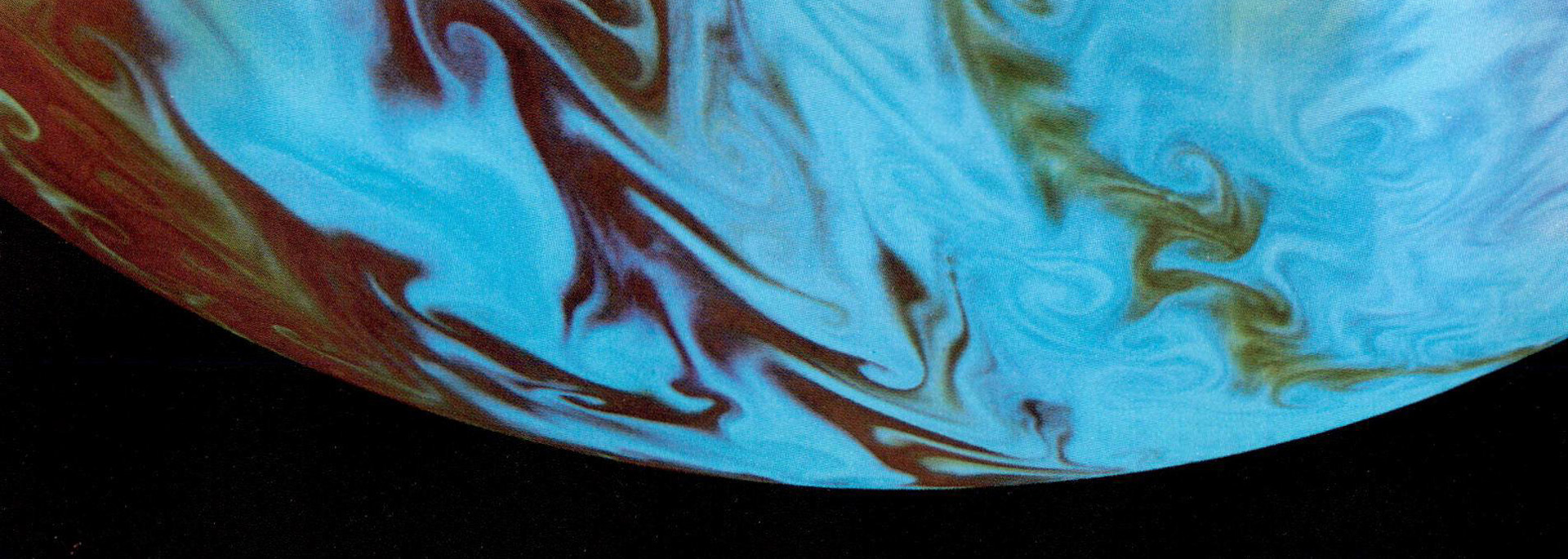“Combining physical and visual simulation—creation of the planet Jupiter for the film “2010”” by Yaeger, Upson and Myers
Conference:
Type(s):
Title:
- Combining physical and visual simulation—creation of the planet Jupiter for the film “2010”
Presenter(s)/Author(s):
Abstract:
By integrating physical simulation, in the form of numerical fluid dynamics, with visual simulation, in the form of particle rendering, texture mapping and traditional polygonal modeling techniques, we have achieved a uniquely realistic and organic special effects sequence of a planetary atmospheric flow. This paper examines the selection, implementation, and application of these techniques, know collectively as VORTEX, to produce the moving images of the planet Jupiter in the film “2010.” Details of the generation of the flow field and the fluid dynamic algorithms employed are presented, along with issues relating to the generation and updating of the atmospheric images. We also describe the integration of these techniques with an advanced computer graphics imaging system. The VORTEX system provides a fairly general solution to a class of imaging problems involving two-dimensional fluid flows, and we remark upon its application to other projects. VORTEX, as an example of the marriage of physical simulation to visual simulation, demonstrates the importance of computer graphics to the computational sciences and of the physical sciences to the field of computer graphics.
References:
1. Avis, Charles C., Collins, Stewart A., “Voyager Time-Lapse Cylindrical-Projection Jupiter Mosaics,” NASA JpL Publication JPL D-531, Feb. 1983.
2. Blinn, J. and Newell, M., “Texture and Reflection on Computer-Generated Images,” Communications of the ACM, 19, i0, Oct. 1976.
3. Bouknight, W.J., “A Procedure for Generation of Three-Dimensional Half-Toned Computer Graphics Representations,” Communications of the ACM, 13, 9, Sept. 1970.
4. Catmull, E., “A Subdivision Algorithm for Computer Display of Curved Surfaces,” PhD Dissertation, Computer Science Dept., university of Utah, Tech. Report UTEC-CSc-74-133, Dec. 1974.
5. Crow, F., “Summed-Area Tab les for Texture Mapping,” Computer Graphics, 18, 3, July 1984.
6. Holton, James R., An Introduction to Dynamic Meteorology, Academic Press, 1972.
7. Limaye, S~S., et. al, “Jovian Winds from Voyager 2. Part I: Zonal Mean Circulation,” Journal of Atmospheric Sciences, 39, 7, July 1982.
8. Mitchell, J., “The Nature of Large-Scale Turbulence in the Jovian Atmosphere,” NASA JPL Publication 82-34, Jan. 1982.
9. Newman, W. and Sproull, R., Principles of Interactive Graphics, 2nd Ed. , McGraw-Hill, 1979.
10. Orszag, S.A. and Gottlieb, D., “Numerical Analysis of Spectral Methods,” Society for Industrial and Applied Mathematics, 1977.
11. Reeves, W.T., “Particle Systems–A Technique for Modeling a Class of Fuzzy Objects ,” ACM Transactions on Graphics, 2, 2, April 1983.
12. Sutherland, I.E., Sproull, R.F., and Schumacher, R.A., “A Characterization of Ten Hidden-Surface Algorithms,” ACM Computing Surveys, 6, i, March 19 74.
13. Watkins, G.S., “A Real-Time Visible Surface Algorithm,” Computer Science Dept. University of Utah, UTEC-CSc-70-101, June 1970.
14. Weiler, K. and Atherton, P., “Hidden Surface Removal Using Polygon Area Sorting,” Computer Graphics, ll, 2, Summer 1977.
15. Williams, L., “Pyramidal Parametrics,” Computer Graphics, 17, 3, July 1983.




